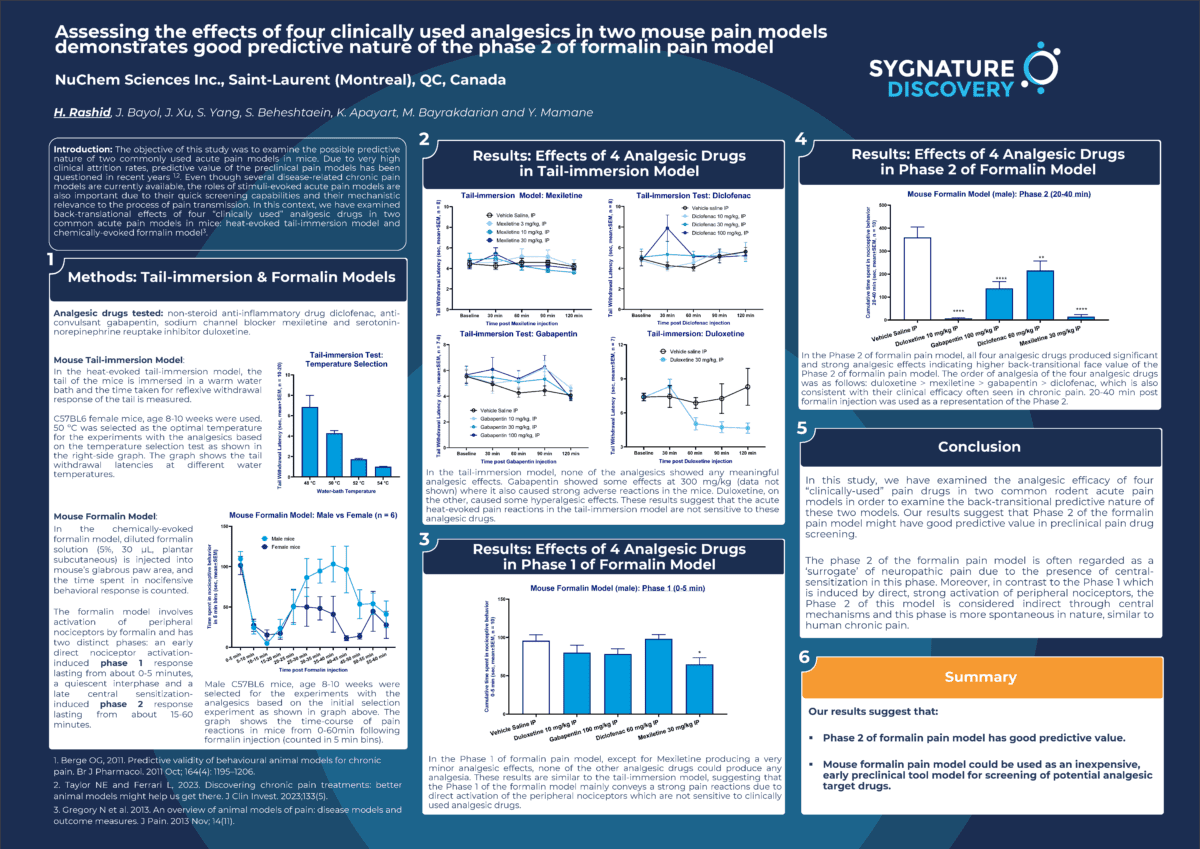Assessing the effects of four clinically used analgesics in two mechanistic stimuli-evoked acute pain models in mice demonstrates good predictive nature of the phase 2 of formalin pain model.
Due to very high clinical attrition rates, the predictive value of the preclinical pain models has been questioned in recent years. Even though several disease-related chronic pain models are currently available, the roles of stimuli-evoked acute pain models are also important due to their quick screening capabilities and their mechanistic relevance to the process of pain transmission. In this context, we have examined the back-translational effects of four clinically used analgesics in two common acute pain models in mice: the heat-evoked tail-immersion model and the chemically-evoked formalin model.
The effects of these drugs mainly in the second phase of the formalin model is noteworthy since this phase involves a neuronal process called central sensitization, which is known to be implicated in the generation of chronic pain. Hence, we suggest that the second phase of the formalin model could be used as a very cost-effective and quick screening model in predicting the analgesic effects of novel pain therapeutic targets in preclinical drug discovery.
NuChem Sciences and Sygnature Discovery are now collaborating closely. To highlight our combined expertise and collaborative efforts, NuChem’s poster has been shared on Sygnature Discovery’s website and we are proud to be able to count on their expertise in pharmacology, especially with pain models, to offer our customers even more services. This serves as a testament to our integrated approach and the synergy between our companies

